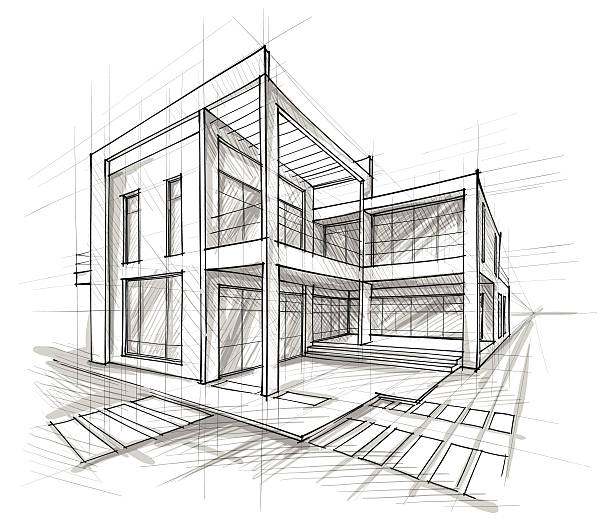How CDA Architects Deliver Cutting-Edge Solutions for Sustainable Architecture
How CDA Architects Deliver Cutting-Edge Solutions for Sustainable Architecture
Blog Article
Recognizing the Collaborative Process In Between Engineers and Engineers in Modern Building Projects
The collaborative procedure in between designers and engineers is important in modern building and construction tasks, as it balances style intent with engineering usefulness. Discovering these dynamics reveals insights that can substantially affect project end results and general industry criteria.
The Relevance of Partnership
The collaborative harmony between architects and designers is vital for the successful understanding of any type of construction task. This partnership brings together distinctive competence and perspectives, making it possible for the combination of innovative layout with useful design services. By collaborating, architects and engineers can ensure that a job not only satisfies visual and practical needs however additionally abides by safety and security, sustainability, and monetary restraints.
Collaboration cultivates a shared vision, assisting in the alignment of goals and assumptions from the outset. This positioning is crucial in resolving potential difficulties and mitigating threats that could develop throughout the project lifecycle. A collective strategy allows for the efficient allowance of resources, maximizing both time and cost.
The significance of cooperation encompasses the iterative process of style and building, where responses from designers can inform architectural decisions, resulting in more practical and lasting layouts. Alternatively, architects can inspire engineers to think creatively about exactly how to accomplish structural stability without jeopardizing creative intent. Eventually, the collective connection in between designers and engineers is not simply useful; it is essential to the development of top notch, practical, and ingenious developed atmospheres that meet the needs of society.
Interaction Strategies and Devices
Efficient communication techniques and tools are vital for cultivating cooperation in between designers and engineers throughout the task lifecycle. Developing clear networks of communication is important to ensure that all employee are straightened with job goals, timelines, and responsibilities. Normal conferences, both in-person and digital, offer possibilities for stakeholders to talk about development, address issues, and make informed decisions.

In addition, adopting joint communication devices, such as Slack or Microsoft Teams, permits instantaneous messaging, documents sharing, and ongoing discussions, promoting an extra agile action to arising issues. Paper monitoring systems also play a vital role in organizing job documents, ensuring that all team participants have accessibility to the latest information.
Shared Goals and Job Vision
A linked task vision serves as the foundation for successful partnership in between engineers and designers (cda architects). This common vision not just aligns the efforts of both parties but likewise establishes a typical structure for decision-making throughout the job's lifecycle. By verbalizing clear objectives, stakeholders can properly browse the intricacies of modern-day building and construction tasks, ensuring that both visual and functional needs are met
Developing common objectives entails open discussion and a complete understanding of each technique's payments. Designers normally concentrate on style intent, spatial connections, and user experience, while engineers emphasize architectural honesty, systems performance, and compliance with policies. When these perspectives are aligned, the outcome is a natural job that adheres to both creative desires and technological expediency.
Furthermore, a well-defined task vision promotes responsibility among team members, urging each individual to take ownership of their role in attaining the preferred outcome. Normal check-ins and collective workshops can even more reinforce this dedication, permitting adjustments to be made as the job develops. Ultimately, a common vision not only boosts team effort but likewise elevates the top quality of the final deliverable, leading to effective project conclusion.
The Role of Modern Technology
Leveraging innovation has actually ended up being essential in boosting collaboration in between architects and designers. The integration of sophisticated software tools promotes real-time communication and details sharing, check it out enabling groups to work a lot more efficiently and efficiently. Structure Information Modeling (BIM) sticks out as a pivotal innovation, permitting both architects and designers to develop comprehensive 3D designs that envelop design intent and structural honesty. This common visual depiction decreases misunderstandings and enhances the decision-making procedure.
Moreover, cloud-based platforms make it possible for smooth cooperation, enabling job stakeholders to gain access to and update project information from anywhere. This cultivates a culture of transparency and accountability, as adjustments can be tracked and assessed in real-time. In addition, mobile applications additional enhance communication, giving on-site groups with instant access to task specs and updates.
Emerging technologies such as expert system and artificial intelligence are additionally starting to play a function in anticipating evaluation, helping groups determine potential concerns before they occur. Inevitably, the function of technology in architecture-engineering cooperation not only improves operations effectiveness but additionally enhances technology, causing more effective project end results. By embracing these technical developments, engineers and engineers can make certain a much more natural and efficient joint process throughout the building and construction lifecycle.
Situation Researches in Successful Collaborations
Various study show the profound effect of reliable partnerships in between architects and designers on task results. One remarkable example is the partnership on the High Line in New York City, where landscape designers, designers, and urban coordinators collaborated to change an abandoned railway into a lively public park. find here This multidisciplinary approach not only boosted the visual quality however additionally made sure structural safety and ecological sustainability.

The Burj Khalifa in Dubai additionally demonstrates the importance of collaborative initiatives - cda architects. The assimilation of style and engineering competence allowed the job Extra resources team to attain extraordinary elevations while adhering to safety laws and visual vision
These examples emphasize the value of communication, trust, and shared purposes. In today's complicated building environment, such collaborations are important to navigating obstacles and providing projects that fulfill both practical and visionary objectives.
Final Thought
In conclusion, the partnership in between architects and engineers is crucial for the success of modern building tasks. Effective communication methods, a common project vision, and the integration of sophisticated modern technologies are crucial elements that promote this collaboration.
Report this page